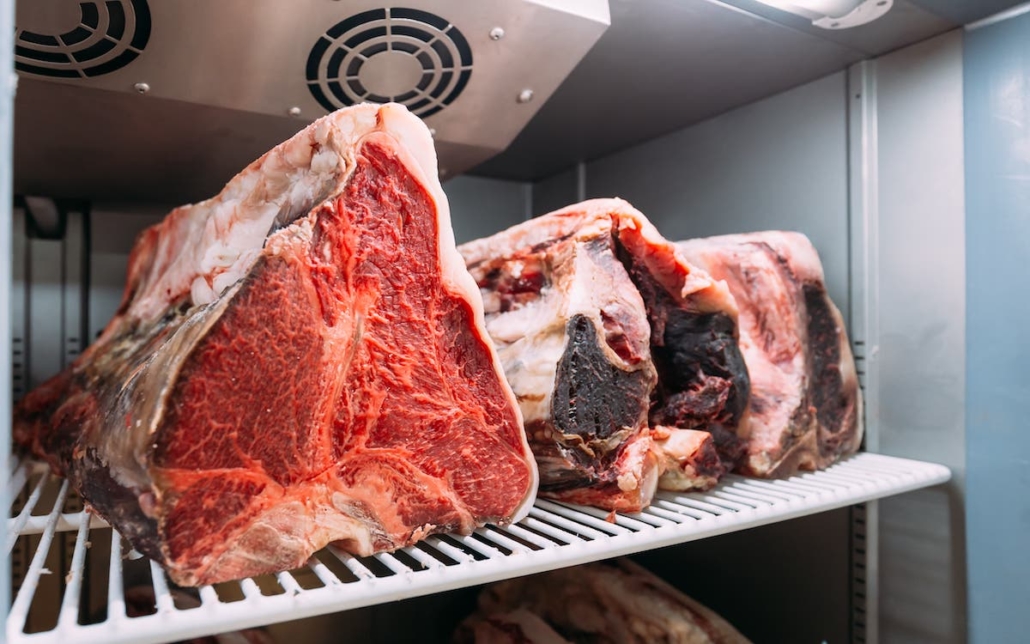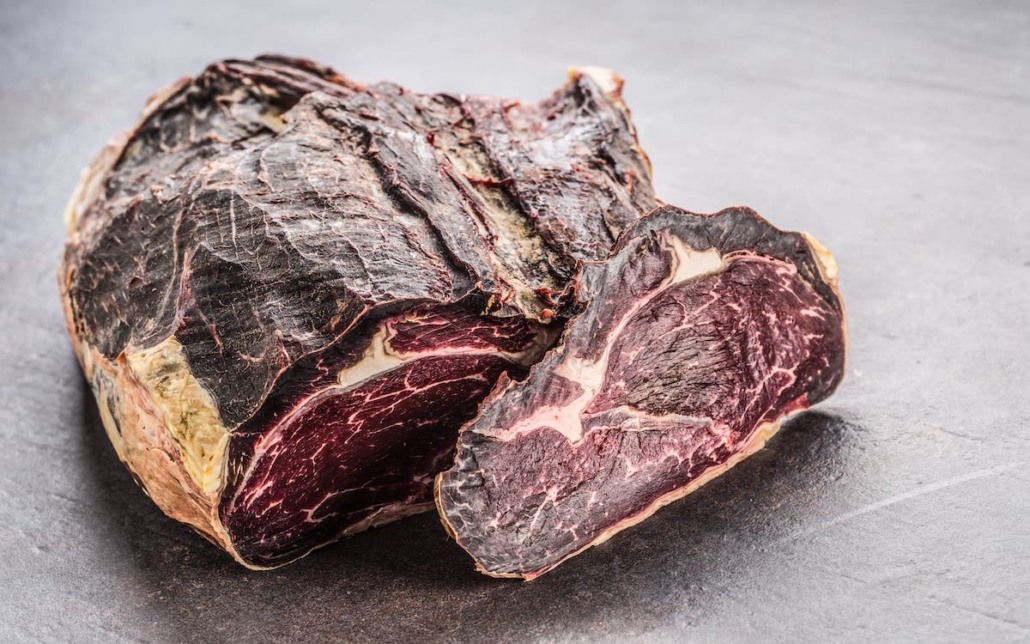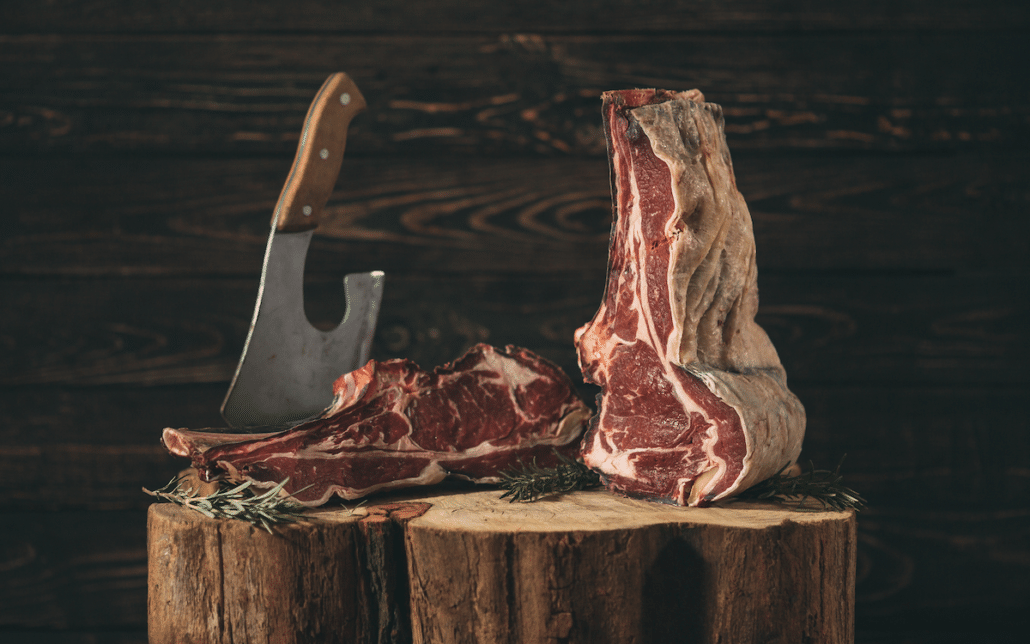Dry Age Beef, Is It Worth The Effort And Price?

What does it even mean to dry age beef?
Well, the process of dry-aging beef is a relatively simple one. Really, it is the process of leaving beef to begin decomposing, but in such surroundings that the actual meat doesn’t go bad.
The controlled environment that beef is dry-aged in means that no mold, fungus, or anything similar comes into contact with the meat. Instead, the beef is simply allowed to become better over time. This happens for three main reasons: moisture loss, tenderization, and flavor change.
The moisture loss is perhaps the biggest factor when dry-aging beef. A dry-aged piece of beef can lose up to around 20-30% percent of its initial volume in water loss, which concentrates its flavor.
The majority of this loss of moisture takes place in the outer layers of the meat – some of which become sufficiently desiccated that they must be trimmed before cooking the meat. Therefore, the larger your piece of beef is to start with, the better your yield will be at the end of the process.
Tenderization occurs when some enzymes, which naturally live within the beef, begin to break down some of the muscle fibers present in the meat. This means that a well-aged steak will be much more tender than a fresh steak.
Finally, we come to flavor change. The flavor change of the beef is caused by a number of processes, including the enzyme action that we just discussed, as well as bacteria within the steak. Dry-aged meat which has been done properly will develop very interesting flavors, from intense beefiness to nuttiness, and slightly cheese-like. A great point of comparison is to think of blue cheese and mushrooms – that’s essentially what the flavor is like.
So when it comes right down to brass tacks the question really is, is it worth it?
Let’s break it down.
The Con’s:
It takes 14 to 30 days to dry aged prime cuts of beef. That’s 14 to 30 days of refrigeration cost and time when non-dry aged beef could be getting cut and sold.
At least 20% of the beef is lost due to dehydration or moisture loss and the desiccated outer layer needs to be trimmed off and thrown away.
You have to pay attention. This is technically not a con, obviously you have to pay attention to everything you do with food, but you have to pay very close attention and have specialized equipment to safely and effectively dry aged beef. For non Dry Aged beef it’s just cut and sell.
The Pros:
Flavor … That’s it.
The flavor is completely different than non-dry aged beef. Is it enough of a flavor improvement to warrant all the time, effort and cost?
Absolutely
When you take into consideration the fact that it takes at least 18 months to get a cow to the point where it’s ready to process with no less than 1000 steps in between, to me, it only makes sense to go the extra mile and show the animal the respect it deserves by turning it into the highest quality product possible.
At the Hollow we dry age on the carcass for at least 14 to 20 days and then there is an additional 15 to 20 days of dry aging added to the primal cuts on top of that. This is the way we prefer to do every cut of meat. And why we differentiate between our dry aged and non dry aged. It is also the reason there is a increase in price for dry aging.
Every day we spend on the farm and in the butcher shop one message/question keeps resonating with us over and over again.
What can we do to make the highest quality ingredients all while being respectful to the animal while it spends its time with us.
To me dry aging is about respect for the animal and the ingredient. A finishing touch on a long process and effort required to get the highest quality ingredients from our farm to your dinner plate.
Peace
Binks



